Don't Know Whether to Laugh or Cry, May 10, 2017
Ironically, though, we must express our gratitude to Trump and Co. Without the mirrors, painful though they be, held up by so many, we could pretend to believe the usual comfortable lies about America and her brutal history. Not just the Native American genocide, being played out once again at Standing Rock, and the monstrosity of slavery, where black lives only mattered as property and still don't matter equally, but the conveniently forgotten rejection of Jewish asylum seekers, the fire bombing of Japanese cities, the destruction of virtually everything in North Korea, the criminal napalming of Vietnamese villages and jungles, the violation of Cambodia which gave rise to Pol Pot, and the insanely intensive bombing of Laos. Because Trump has repeatedly exposed his ignorance of everything about the world and American history, all convenient lies, euphemisms, and American exceptionalism are being challenged.
|
|||||||
That mirror has been held up. We have been shown our country's true nature. That's a blessing for which we must be grateful--and humble
Fortunately, Trump and his fascist cronies, the alt-right, and the white supremacists are so blatant that their extremism is unmistakable. The constant claim of "fake news" reveals the true source of the "Faux News." With the absurdity of the political scene, it is often nigh on to impossible to distinguish between The Onion and the "Main Stream Media." Instead, we find our brilliant comedians doing the work of telling the truth!
|
|||||||
| "It's the end of the world and we know it: Scientists in many disciplines see apocalypse, soon"
By Phil Torres To read the article, click HERE |
||
 |
||
We must resist, and we must not let ourselves be distracted by Trump's mental condition, his mendacity, his worthlessness, his shallowness, his ugliness, his misogyny, his hair, his tie, his little hands, and his insanity. These are not important.
In the Anguttara Nikaya, Ven. Sariputta explains five ways to subdue anger. The entire sutta can be read by clicking here, but the fourth example below seems particularly apt in describing Trump and his circle of friends.
| "Fourth, one might get angry with a person whose ways are impure in both deed and word and who never achieves mental clarity or mental calm. Suppose a person who was grievously ill were to go along the highway with no village anywhere nearby. If someone else were to see him, he might raise pity and compassion in that second person, who might say to himself, 'Alas! That poor man needs proper food, proper medicine, proper assistance, or a guide to lead him to a village, lest he suffer even more or die here.' In the same way, with a person whose ways are impure in both deed and word and who never obtains mental clarity or mental calm, pity and compassion should arise, so that one says to himself, 'Alas! He should give up his bad habits and develop good habits, so that, on the breaking up of the body after death, he is not reborn in a miserable realm.' In this way, anger with that person should be subdued.
Anguttara Nikaya 5, 162 |
|
Anger and hatred are not the answer. Trump and his cronies will reap the harvest of their kamma. Of course, impeachment of the whole lot is desirable, but unity and resistence must remain the focus. We are ALL victims of the vicious system. Those in power are doing their best to divide and exploit us. Our only hope is that everyone realizes that we are all in danger. We must unite and stand up for each other. If we don't protect the refugees, the poor, the unemployed, the homeless, the hungry, the hunted, the weak, the elderly, the minorities, the mocked, the misunderstood, the left-handed, and the vulnerable, everything will collapse. If we don't protect Nature, the environment, and all the other species, life on our planet home will soon become extinct. Don't be distracted. Protect, plant trees, recycle, feed, advocate, boycott, divest, sue, protest, oppose all that is cruel, wasteful, and wrong.
| "Millions of mouths run dry in drought without end,"
By Anushiya Sathisraja |
|
 |
||
| Click either photo to see more photos of Kurunegala and the new land | ||
 |
||
We hope that we will be able to provide the entire sum of $10,000 (15 lakh rupees) in due time. Donations are still needed and welcome!
Our class of novices at Vajiraramaya is delightful. The students work well together and respond enthusiastically to the various activities we give them. It's a pleasure to see the older novices helping the younger ones (and the little temple boys) understand directions, so that nobody gets left behind. This past year, the monastery acquired two rabbits which the novices are taking care of. Before class, the students eagerly report on their pets' growth and development. With that in mind, we chose Sasa Jataka, "The Rabbit in the Moon," as the text for a lesson. After reading it, we had the students act it out as a play. They were amused at the props–a skewed lizard, a pot of curd, a string of red fish, and a branch of mangos–which we had created with colored paper and cardboard. We asked them to volunteer for the roles of rabbit, jackal, monkey, otter, and Sakka. They did a terrific job of acting, and were a good audience, too, both listening and prompting to keep the action flowing.
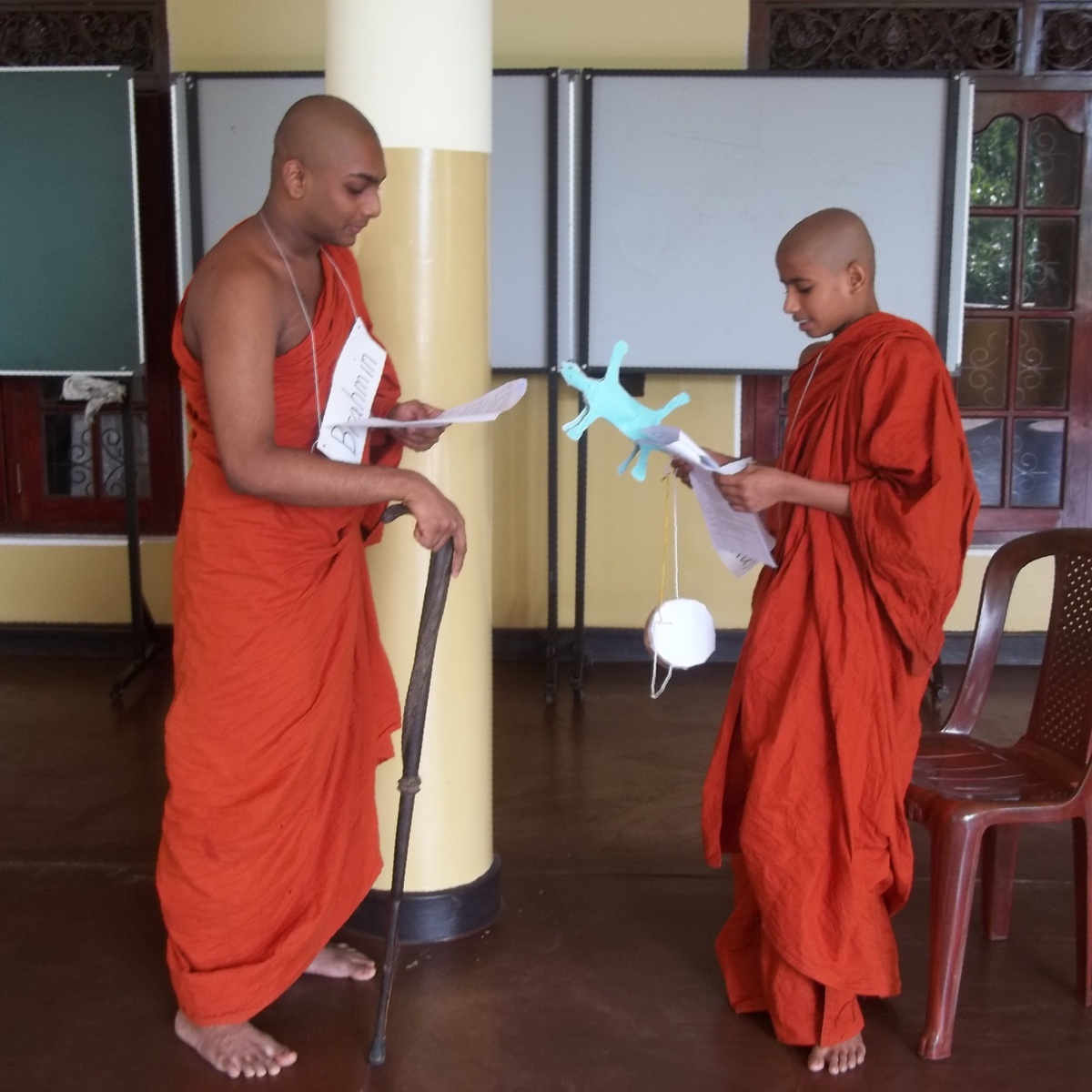 |
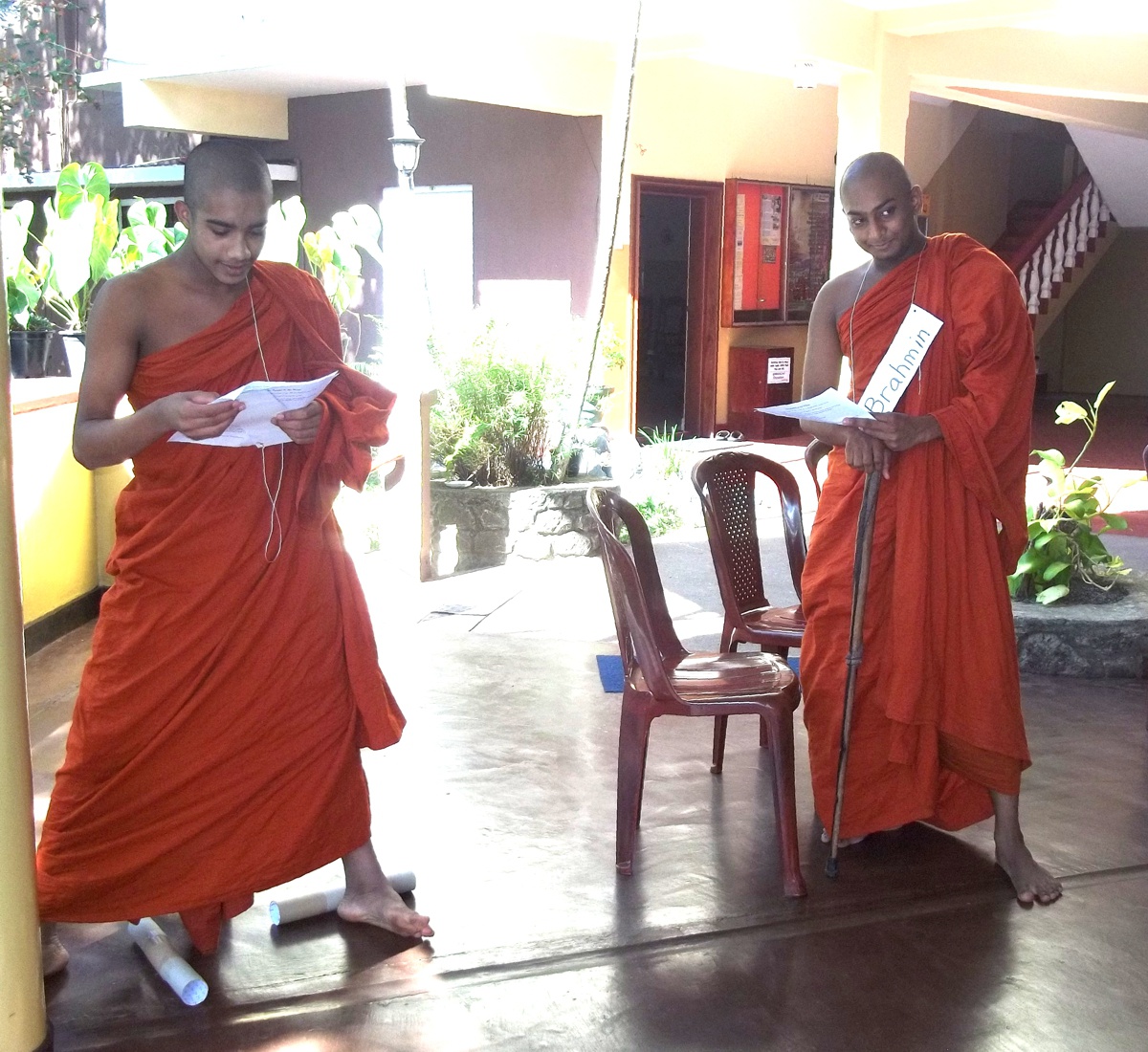 |
|
At Subodharama, after we finished reading Maha-Silava Jataka, "Not One Drop of Blood," our class of university students (mostly foreign monks and nuns) suggested that we discuss human rights. We happened to have in our library the little book Buddhism and Human Rights, by L.P.N Perera, which we had bought in Sri Lanka about thirty years ago, so we used its first chapters as a text. The discussions were very interesting, sometimes veering from the ideals of human rights and support for them in Buddhism to how governments actually treat their citizens. There was also a bit of confusion over the principle of universality and the question of people's responsibilities to the state.
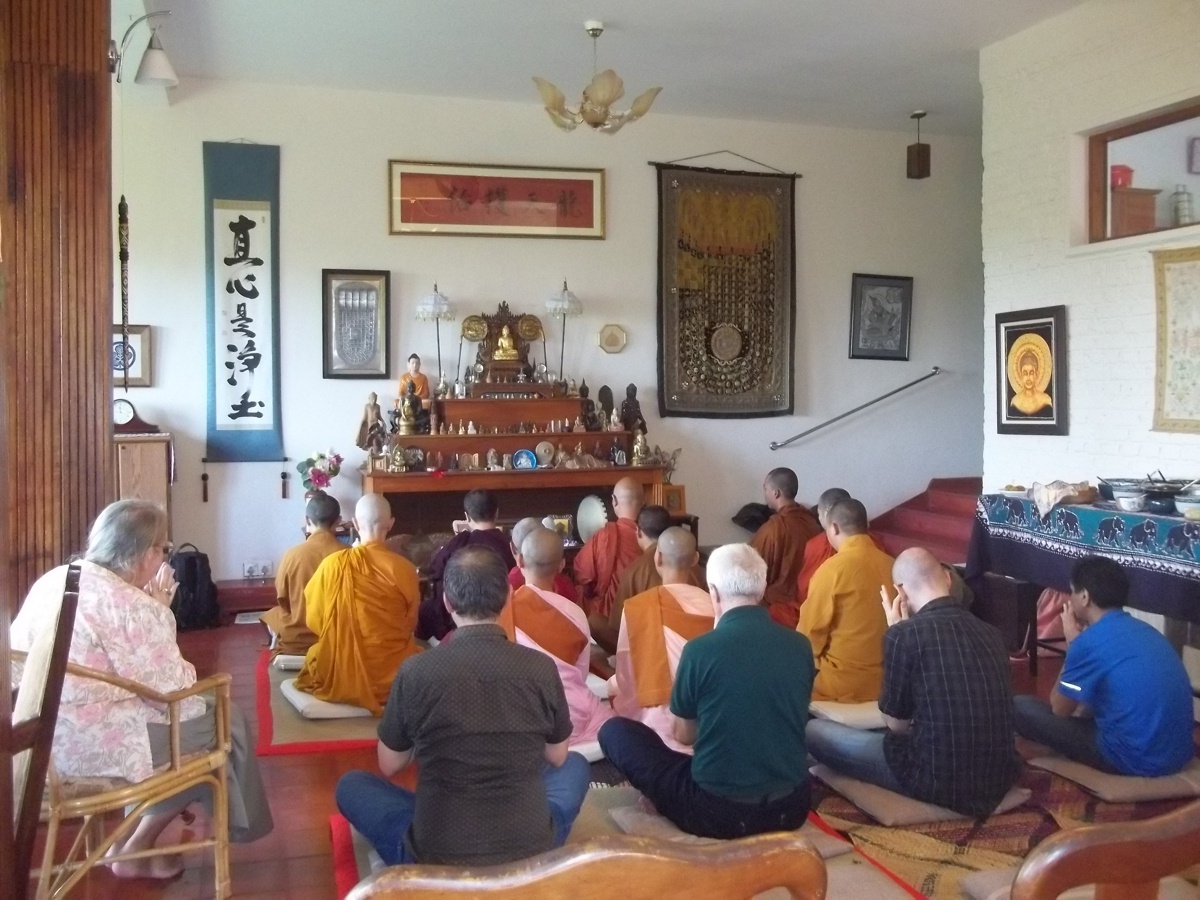 |
||
|
Click the photo to see more photos
|
||
We also used "Red Slippers," an episode of The Mentalist from a few years ago. The story presents the case of a young gay boy, just out of high school, who was apparently burned to death in his car. The question is "Was he murdered, or did he commit suicide?" The episode effectively raises the issues of homophobia, victimization, and bullying, as well as basic human rights. The program was both emotional and daring, raising difficult social issues, but ending with hope.
This exercise was challenging at every level. We were impressed at how quickly the students spotted key elements in the photos to help them understand the situation. Although each student was working on his (or her) own paper, they shared ideas, discussed the photos in detail, and worked effectively together. In the discussion to identify the human rights relevant to each picture, they related some to their own experience, while they found others quite surprising.
Of course, this was just a beginning. There's still a lot to be done before there's a clear understanding of the ideal of universal human rights, but teaching tolerance and exercising critical thinking is always worthwhile.
Our schedule toward the end of the year (assuming the world continues to function more or less normally and us in it) looks very full indeed. We have tentatively scheduled three intensives–in Bangalore, December 11-22; in Kolkata, January 1-13; and in Kandy, January 22-February 3. (The dates may be somewhat flexible, depending on teacher availability.) We're going to need a lot of teachers. Will you join one or all of the courses? Please write and let us know if you're interested. Volunteers are welcome! It's a terrific experience!
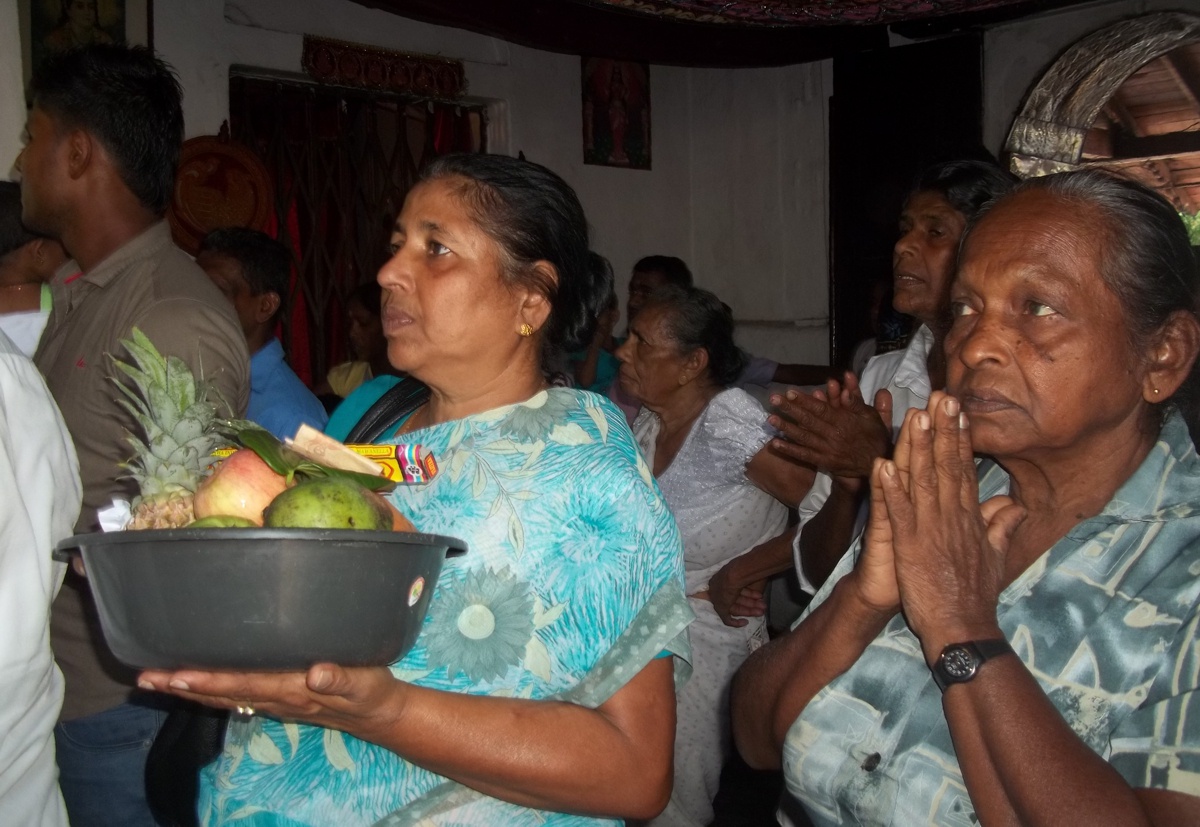 |
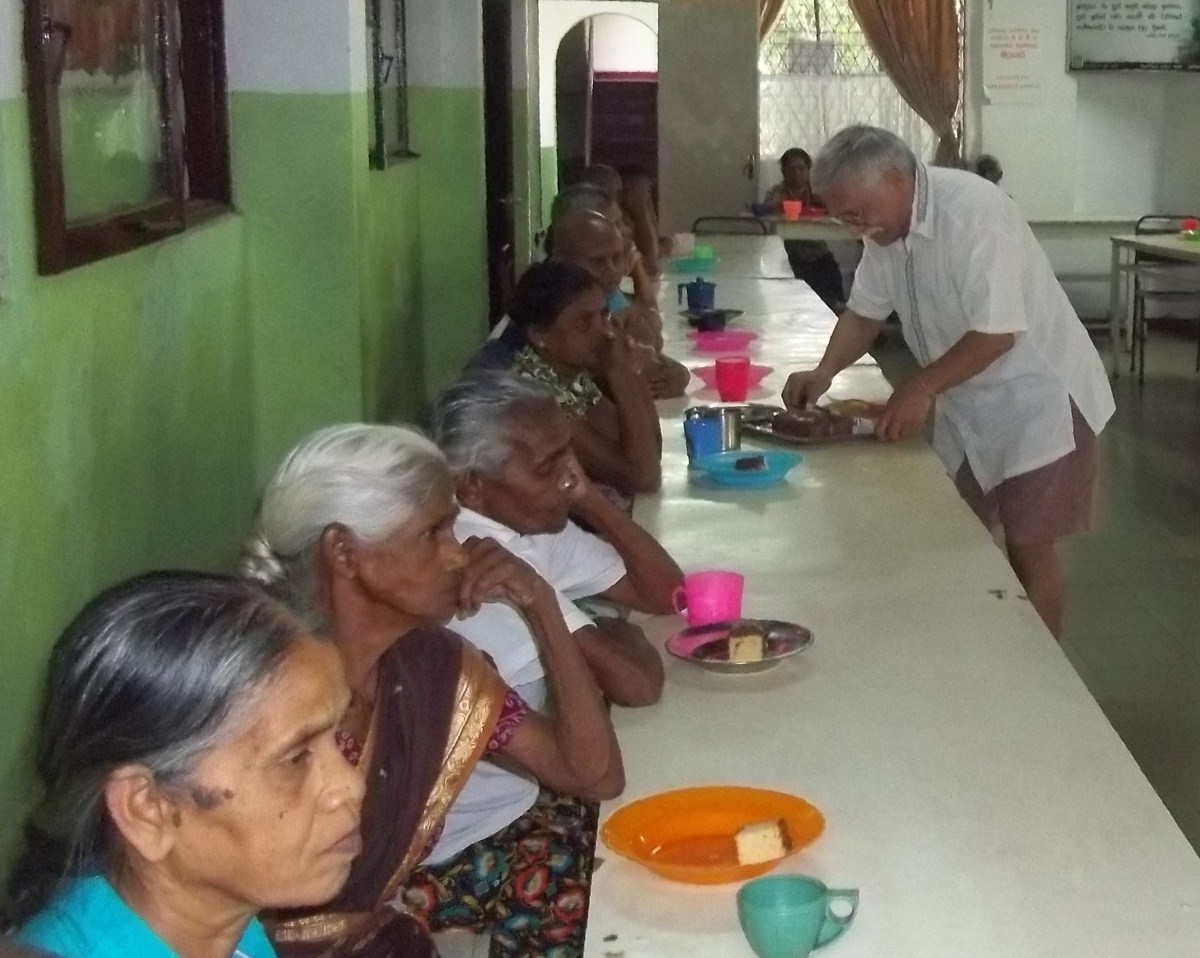 |
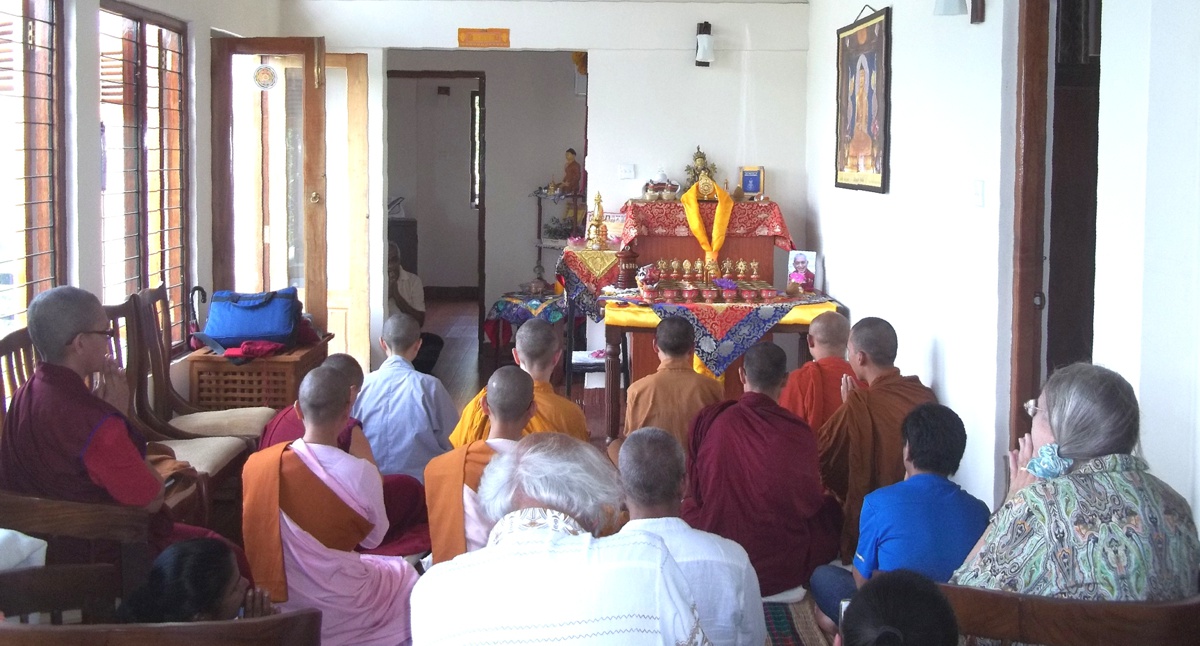 |
|||||||||||||||||||||||||||||||||||||
| A viisit to the Pattini Shrine to wish for good health for freinds and relatives | Serving high tea at the Kandy Cancer Home |
Ven. Lekdron's house blessing
|
|||||||||||||||||||||||||||||||||||||
|
Click each photo to see more photos of the event
|
|||||||||||||||||||||||||||||||||||||||
 |
 |
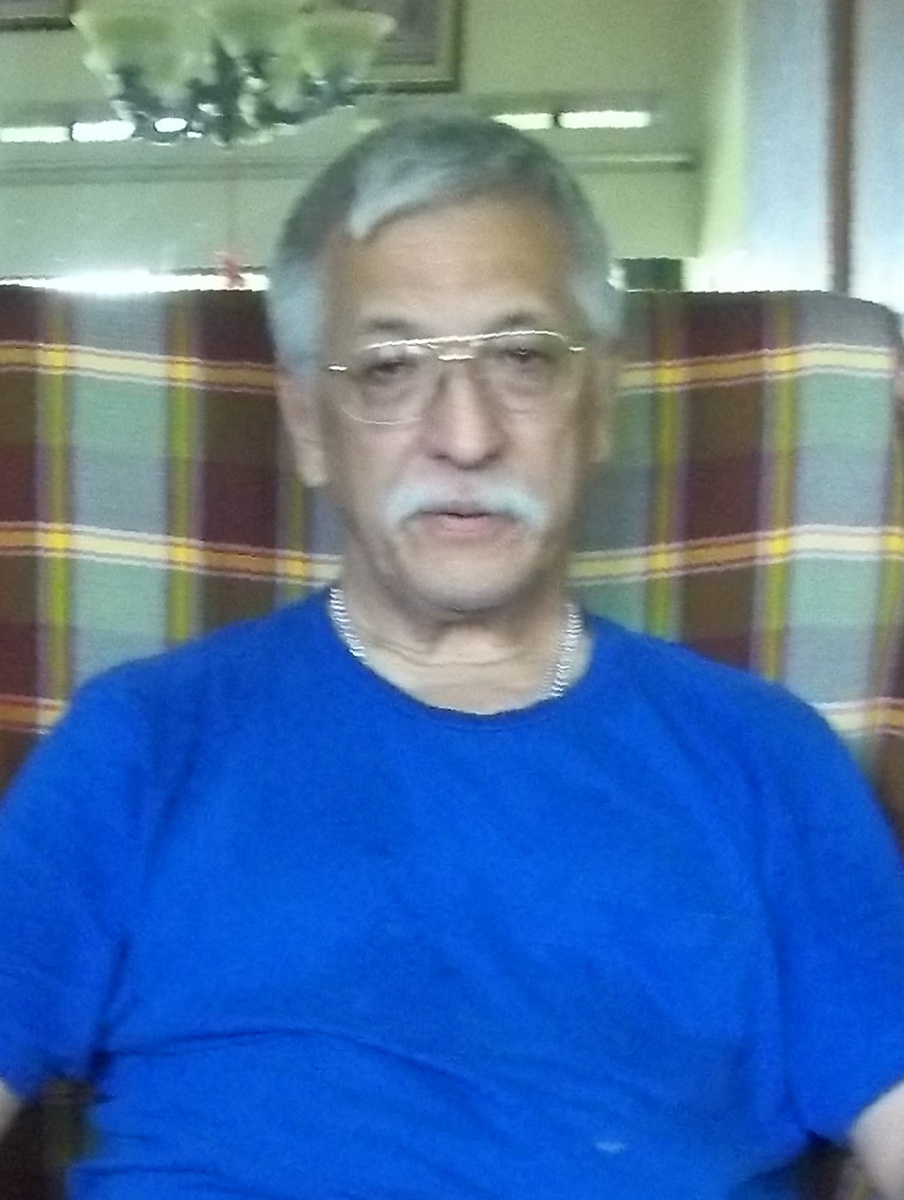 |
|||||||||||||||||||||||||||||||||||||
| A New Year's Celebration at the Ameican Corner in Kandy. We are US Embassy Wardens for Kandy. |
Offering dana to Ven Pannasobhana and Ven. Lekdron to share merit with Sarala and Eid |
||||||||||||||||||||||||||||||||||||||
| April 21, Blue Shirt for Burma Day, in memory of U Win Tin and in support of all political prisoners | |||||||||||||||||||||||||||||||||||||||
|
Click each photo to see more photos of the event
|
|||||||||||||||||||||||||||||||||||||||
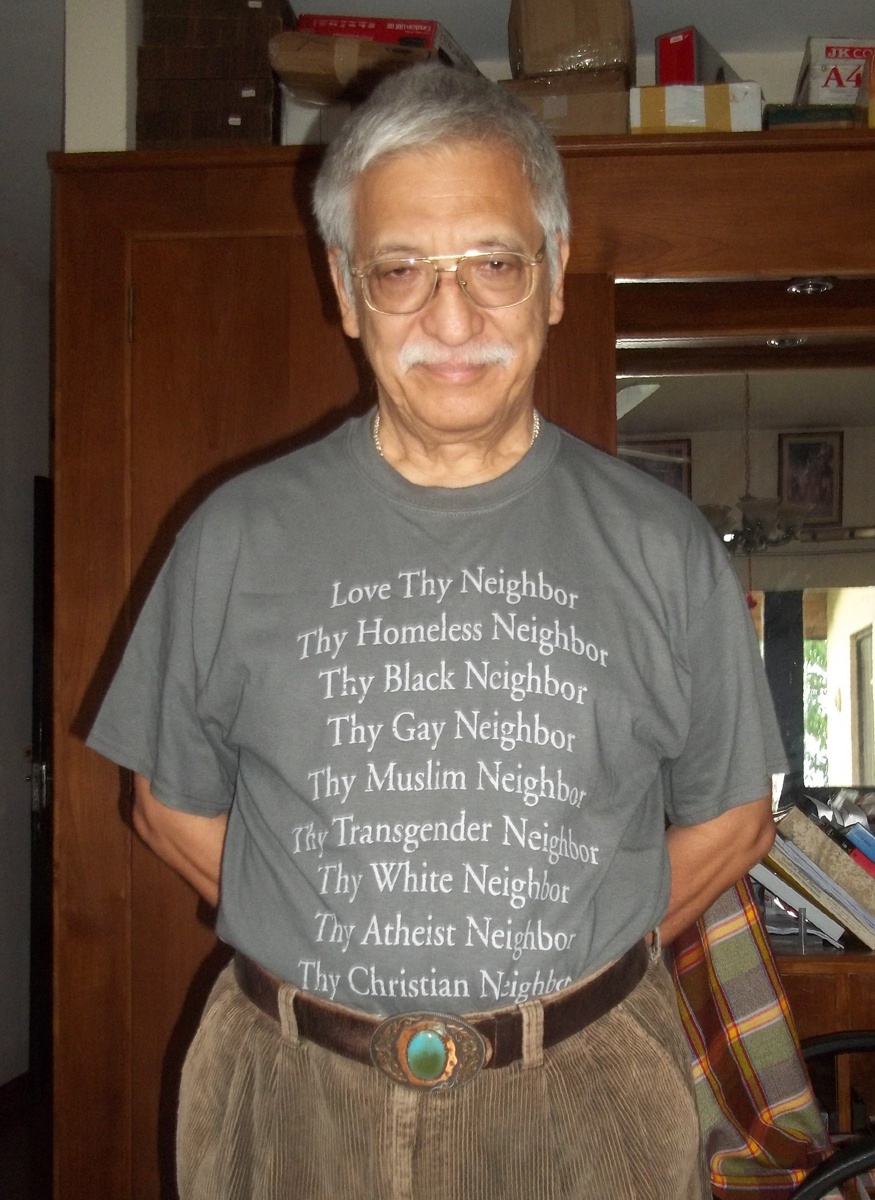 |
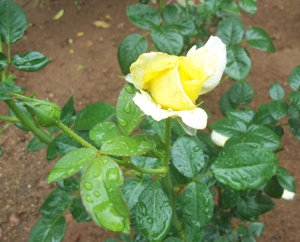 |
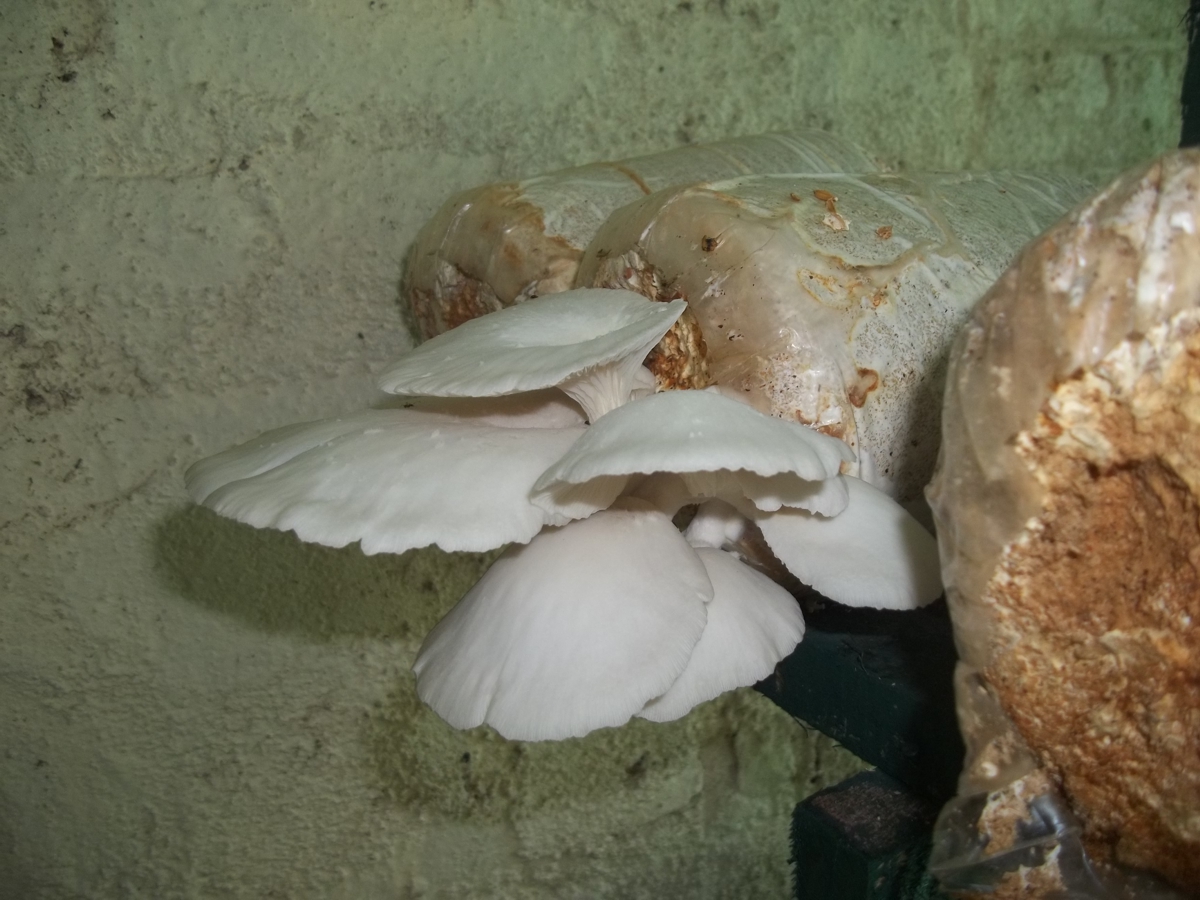 |
|||||||||||||||||||||||||||||||||||||
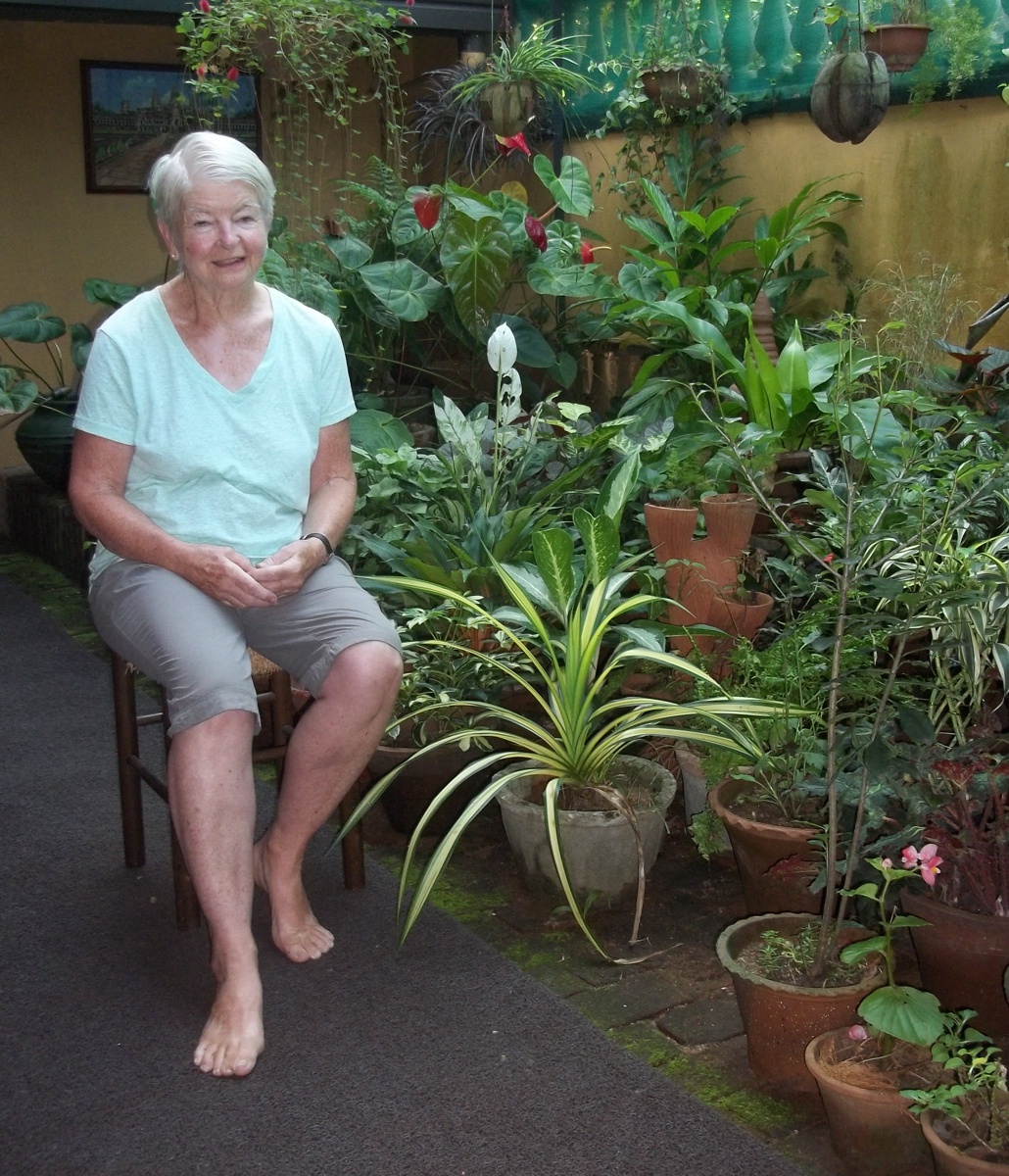 |
|||||||||||||||||||||||||||||||||||||||
| A great T-shirt from Mike Click to enlarge |
Our rose garden
|
Lily's mushrooms
|
|||||||||||||||||||||||||||||||||||||
| Mary, a SERVAS visitor from Ireland. Due to the scarcity of members, Sri Lanka is no longer a nartional member of SERVAS, but we are the National Representatives. | |||||||||||||||||||||||||||||||||||||||
|
Click each photo to see more photos
|
|||||||||||||||||||||||||||||||||||||||
 |
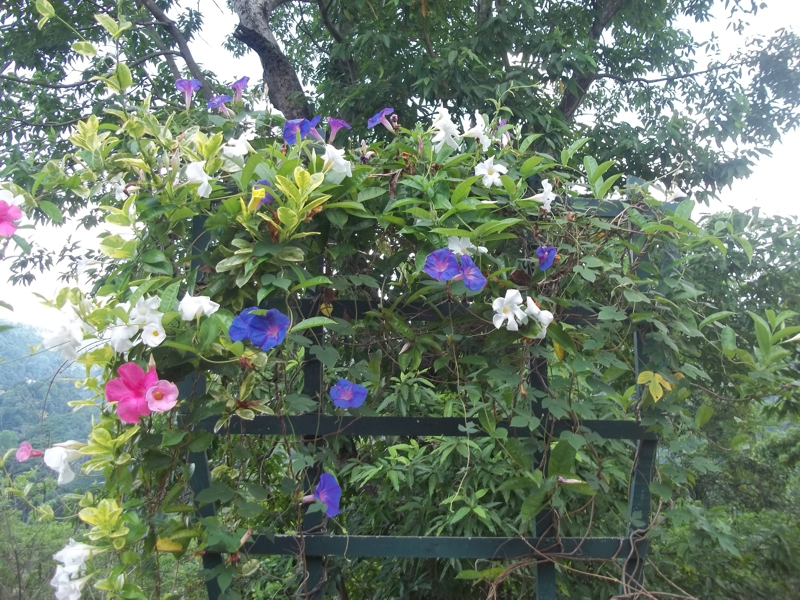 |
||||||||||||||||||||||||||||||||||||||
 |
|||||||||||||||||||||||||||||||||||||||
|
Our Vesak lanterns, created by Edmand and Soma
|
The trellis in our backyard
|
||||||||||||||||||||||||||||||||||||||
|
Kandy Walking Tour, created by Ewen and Dennis
Click to visit the new site |
|||||||||||||||||||||||||||||||||||||||
 |
 |
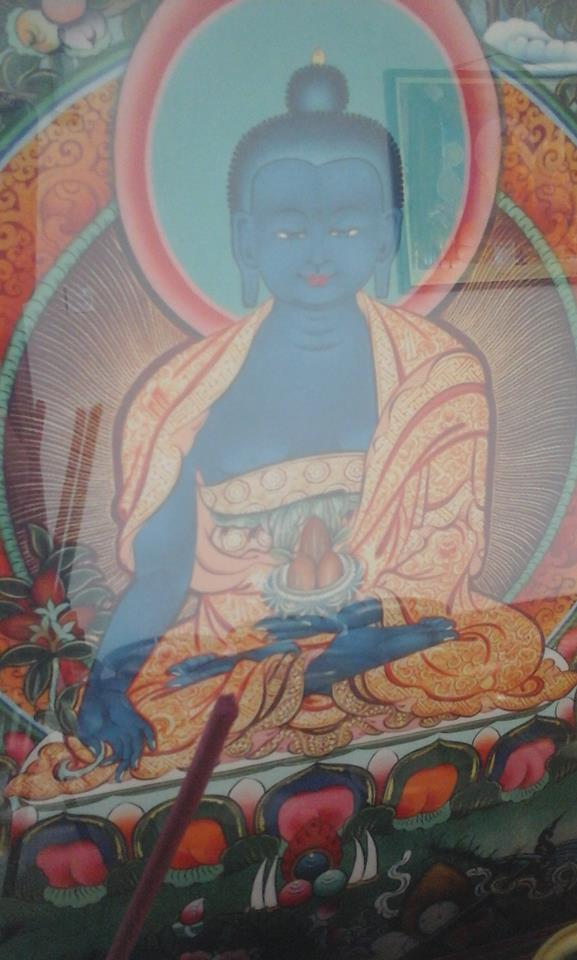 |
|||||||||||||||||||||||||||||||||||||
 |
|||||||||||||||||||||||||||||||||||||||
| Shehan participated in a dance at his school. Click the photo to see a short video | Ven. Lekdron performed a Medicine Buddha Puja, wishing good health to friends and relatives. Click the photo for more photos. | ||||||||||||||||||||||||||||||||||||||
| A slolar-rechargable flashlight, the first we had ever seen, but, of course, we are behind the times. | |||||||||||||||||||||||||||||||||||||||
|
Nezumi
|
|||||||||||||||||||||||||||||||||||||||